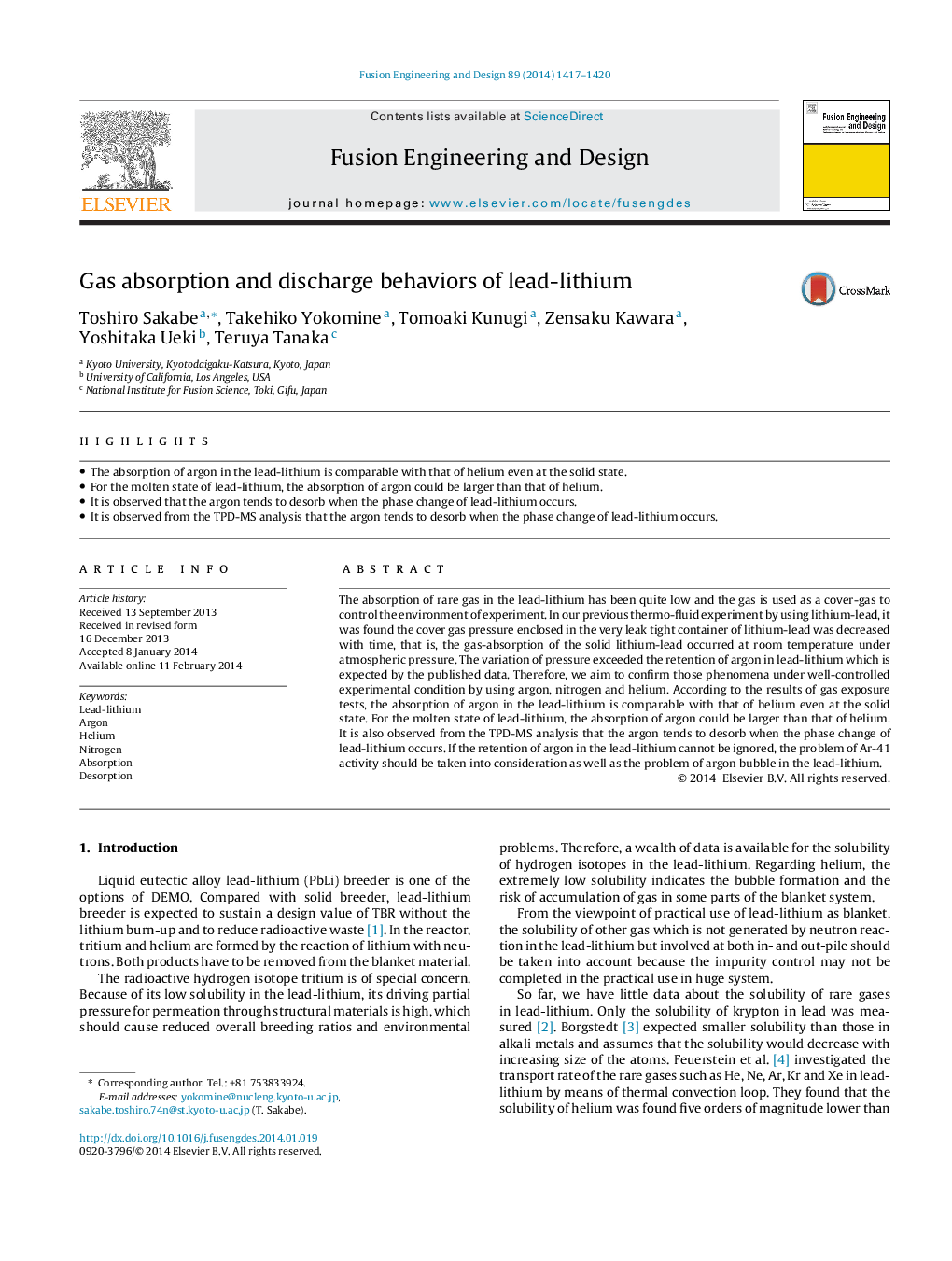| Article ID | Journal | Published Year | Pages | File Type |
|---|---|---|---|---|
| 271245 | Fusion Engineering and Design | 2014 | 4 Pages |
•The absorption of argon in the lead-lithium is comparable with that of helium even at the solid state.•For the molten state of lead-lithium, the absorption of argon could be larger than that of helium.•It is observed that the argon tends to desorb when the phase change of lead-lithium occurs.•It is observed from the TPD-MS analysis that the argon tends to desorb when the phase change of lead-lithium occurs.
The absorption of rare gas in the lead-lithium has been quite low and the gas is used as a cover-gas to control the environment of experiment. In our previous thermo-fluid experiment by using lithium-lead, it was found the cover gas pressure enclosed in the very leak tight container of lithium-lead was decreased with time, that is, the gas-absorption of the solid lithium-lead occurred at room temperature under atmospheric pressure. The variation of pressure exceeded the retention of argon in lead-lithium which is expected by the published data. Therefore, we aim to confirm those phenomena under well-controlled experimental condition by using argon, nitrogen and helium. According to the results of gas exposure tests, the absorption of argon in the lead-lithium is comparable with that of helium even at the solid state. For the molten state of lead-lithium, the absorption of argon could be larger than that of helium. It is also observed from the TPD-MS analysis that the argon tends to desorb when the phase change of lead-lithium occurs. If the retention of argon in the lead-lithium cannot be ignored, the problem of Ar-41 activity should be taken into consideration as well as the problem of argon bubble in the lead-lithium.
